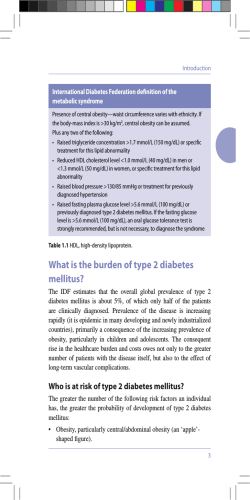
The Islamic University Student Name: of Gaza
The Islamic University
of Gaza
Chemistry Department
Student Name:
Analytical Chemistry
Homework 6
Due Nov 2nd
Student Number:
KEY
Homework 6
Answer the Following Questions:
1. What is the pH of a 5*10-7 M HCl solution?
Before Equil
Equation
After Equil.
HCl H+ + ClH2O H+ + OH5*10-7
H2O
H+
5*10-7 + x
0
OH
x
10-14 = (5*10-7 + x)(x)
Assume 5*10-7 >>x
x = 2*10-8
RE = (2*10-8/5*10-7)*100 = 4%
The assumption is valid. [H+] = 2*10-8 M
pH = 7.70
2. Find the pH of a 0.02 M NaNO3 solution.
NaNO3 is a salt formed from a strong acid and a strong base, therefore
it does not change the pH of water. Neither Na+ nor NO3- will react
with water.
[H+] = [OH-] = 10-7 M
pH = 7.00
(We have mentioned in class that this is not strictly correct as the
diverse ion effect will force extra dissociation and the pH will always
be equal to pOH, but less than 7.00)
3. . Find the pH of a 0.01 M HNO2 (Ka = 7.1*10-4) solution
Ka = x2/(0.01 –x), assume 0.01>>x
X = 2.7*10-3
RE = (2.7*10-3/0.01)*100 = 27%
The assumption is invalid. We should use the quadratic equation.
1
4. Calculate the pH of the solution containing 0.3 M HOAc (Ka = 1.8*10-5)
Ka = x2/(0.3 –x), assume 0.3>>x
X = 2.3*10-3
RE = (2.3*10-3/0.3)*100 = 0.77%
The assumption is valid.
[H+] = X = 2.3*10-3 M
pH = 2.63
5. Find the pH and pOH of a 0.10 M ammonia solution. Kb = 1.8x10-5.
Kb = x2/(0.1 –x), assume 0.1>>x
X = 1.34*10-3
RE = (1.34*10-3/0.1)*100 = 1.34%
The assumption is valid.
[OH-] = 1.34*10-3 M
pOH = 2.87
pH = 14 – 2.87 = 11.13
6. Find the pH of a 0.10 M solution of sodium formate (NaA, Ka = 1.74x10-4).
Kb = 10-14/1.74*10-4 = 5.75*10-11
5.75*10-11 = x2/(0.1 – x)
X = 2.4*10-6,
[OH-] = 2.4*10-6 M
pOH = 5.62
pH = 14 – 5.62 = 8.38
2
RE = v. small
7. Calculate the pH of the solution resulting from adding 30 mL of 0.10 M NaOH to
30 mL of 0.20 M acetic acid (HOAc, Ka = 1.75x10-5). Find the capacity of the formed
buffer.
Initial mmol OH- = 0.1*30 = 3
Initial mmol HOAc = 0.2*30 = 6
mmol HOAc left = 6 – 3 = 3
[HOAC] = 3/60 M
mmol OAc- formed = 3
[OAc-] = 3/60 M
The solution contains HOAc and OAc- therefore it is a buffer solution.
1.75*10-5 = [H+] * (3/60)/(3/60)
[H+] = 1.75*10 -5 M
pH = 4.74
Buffer capacity
b = 2.303 {(3/60) * (3/60)}/ {(3/60) + (3/60)} = 0.058
8. (5 pts) Find the pH of a 0.20 M HCN. Ka = 5.8x10-10. Do you expect any significant
contribution to pH from water dissociation? Explain.
5.8*10-10 = x2 / (0.2 – x)
X = 1.1*10-5 ,
RE= v. small
[H+] = 1.1*10-5 M
pH = 4.97
[OH-] = 10-14/1.1*10-5 = 9.28*10-10 M = [H+]H2O
The concentration of H+ from water is very small compared to that coming from
HCN. Therefore, there should be no significant contribution from water to solution
pH.
3
9. . Why doesn’t water dissociate to produce 10-7 M H+ and 10-7M OHwhen some HBr is added?
The presence of HBr (which is a strong acid) will force the equilibrium of
water to the backward direction. This means that water will dissociate
less, therefore, less H+ and OH- will be produced from water dissociation,
a manifestation of Le Chatelier principle.
10. Calculate the pH of (a) 10-3 M HBr; (b) 10-2 M KOH.
HBr is a strong acid which has a relatively high concentration.
[H+]H2O = 10-11 M, which is negligible as compared to H+ from HBr
[H+] = 10-3 M, pH = 3
KOH is a strong base which has a relatively high concentration.
[OH-]H2O = 10-12 M, which is negligible as compared to OH- from KOH.
[OH-] = 10-2 M, pOH = 2
pH = 14 – 2 = 12
11. Find the pH and fraction of dissociation (x) of a 0.100 M solution of
the weak base B with Kb = 1.00*10-5.
1*10-5 = x2/(0.1 – x)
X = 10-3,
RE = 1% which is OK
[OH-] = 10-3 M, [H+] = 10-11 M, and the pH = 11
Fraction dissociated = (10-3/0.1)*100 = 1%
4
12. Find the pH and concentrations of (CH3)3N and (CH3)3NH+
in a 0.060 M solution of trimethylamine. Kb = 6.3*10-5
6.3*10-5 = x2/(0.060 – x)
X = 1.94*10-3,
RE = 3.2% which is OK
[OH-] = 1.94*10-3 M, pOH = 2.71
pH = 14 – 2.71 = 11.29
13. A 0.10 M solution of a base has pH = 9.28. Find Kb.
[H+] = 10-9.28
[OH-] = 10-4.72
[OH-] = 1.91*10-5 M
Kb = (1.91*10-5)2/(0.10 - 1.91*10-5)
Kb = 3.63*10-9
14. A 0.10 M solution of a base is 2.0% hydrolyzed . Find Kb.
2 = (x/0.10)* 100
X= 0.002
Kb = (0.002)2/0.10 = 4*10-5
5
15. How many grams of NaOAC (FW = 82 g/mol) and how many mL of
0.1 M HCl are needed to prepare 250 mL of a buffer solution at pH =5,
and having a salt concentration of 0.09 M. Ka = 1.8x10-5
pH = 5, therefore, [H+] = 10-5 M
1.8*10-5 = 10-5*0.09/[HOAc]
[HOAc] = 0.05 M
mmol HOAc = 0.05*250 = mmol HCl
12.5 = MHCl * VmL,HCl
VmL, HCl = 125 mL
mmol NaOAc at equilibrium (in the final solution) = 0.09*250 = 22.5
Total mmol NaOAc = mmol NaOAc at equilibrium + mmol HOAc
Total mmol NaOAc = 22.5 + 12.5 = 35
g NaOAc = 35*10-3 *82 = 2.87g
16. How would the pH in the last problem change when 50 mL of 0.02 M
NaCl are added to the prepared buffer.
Excluding possible changes from diverse ion effects on dissociation of
both species, there should be no effect of addition of NaCl on the pH of
the buffer. The buffer will only be diluted which negatively affects the
buffer capacity, but not pH.
6
© Copyright 2025

















